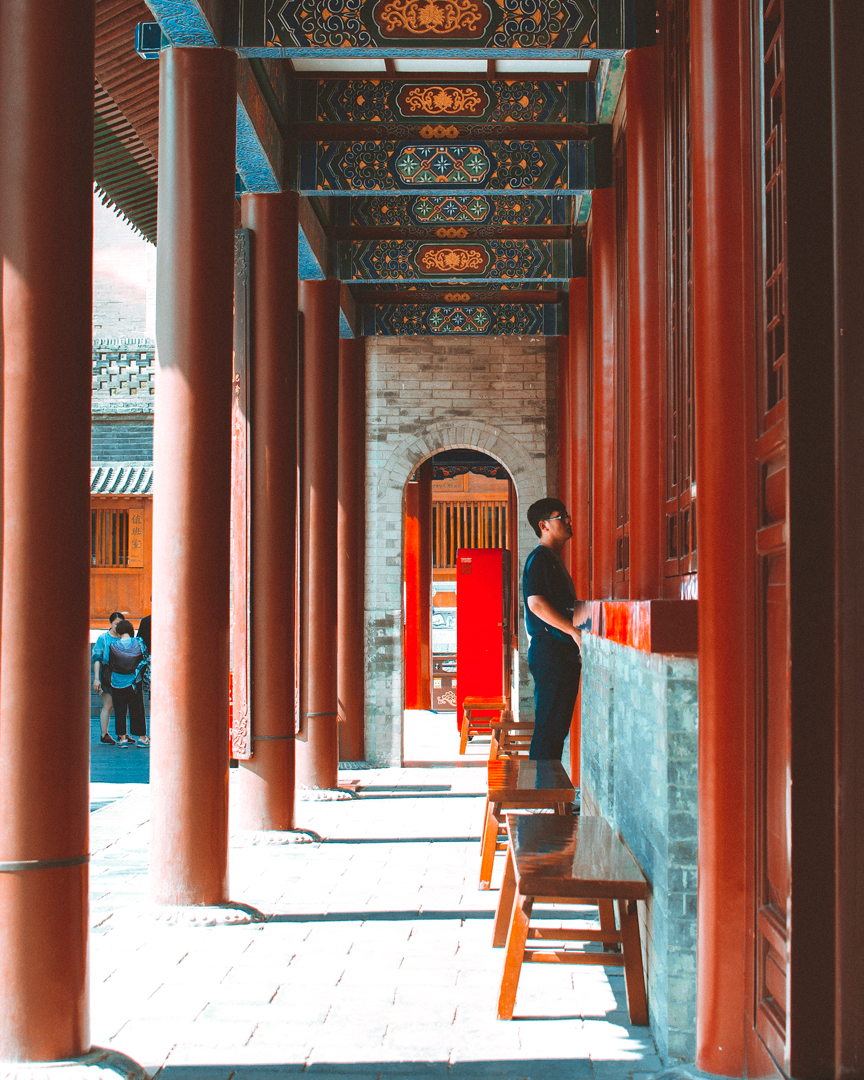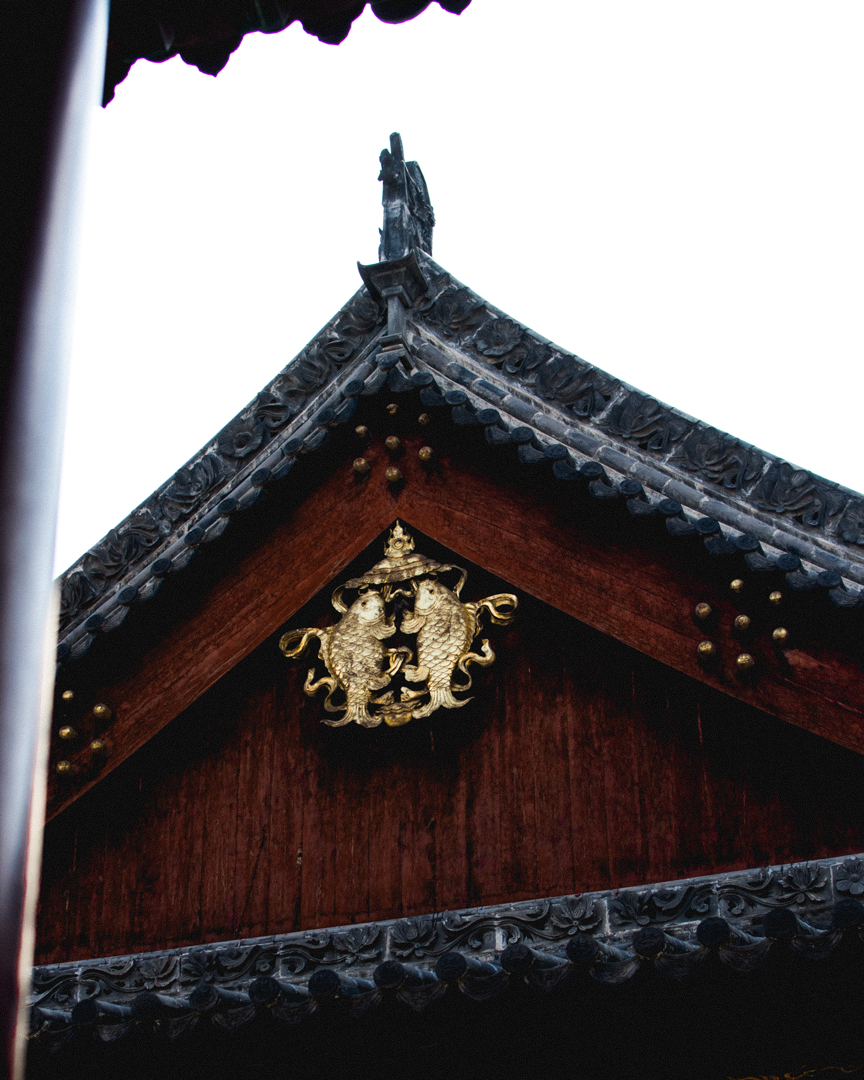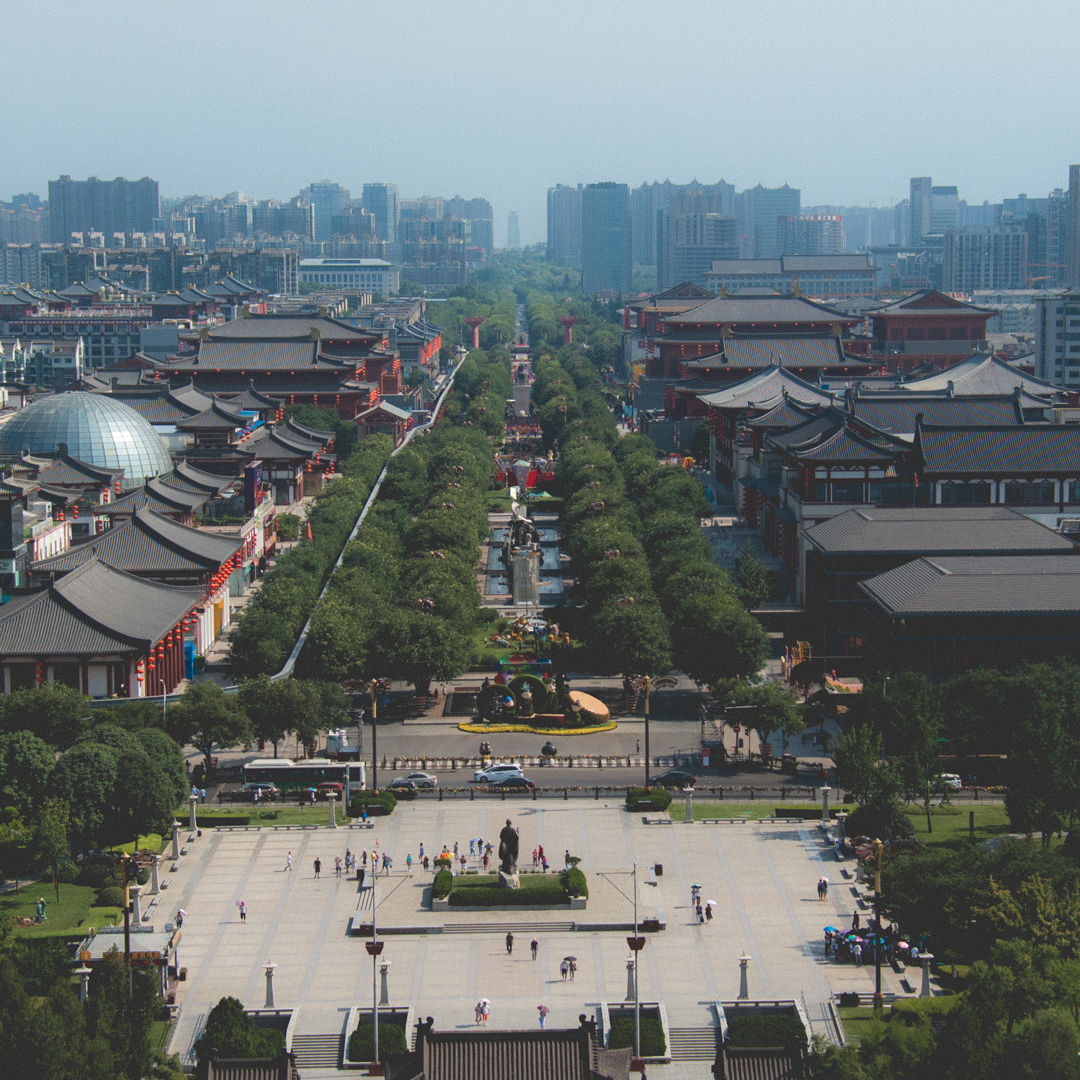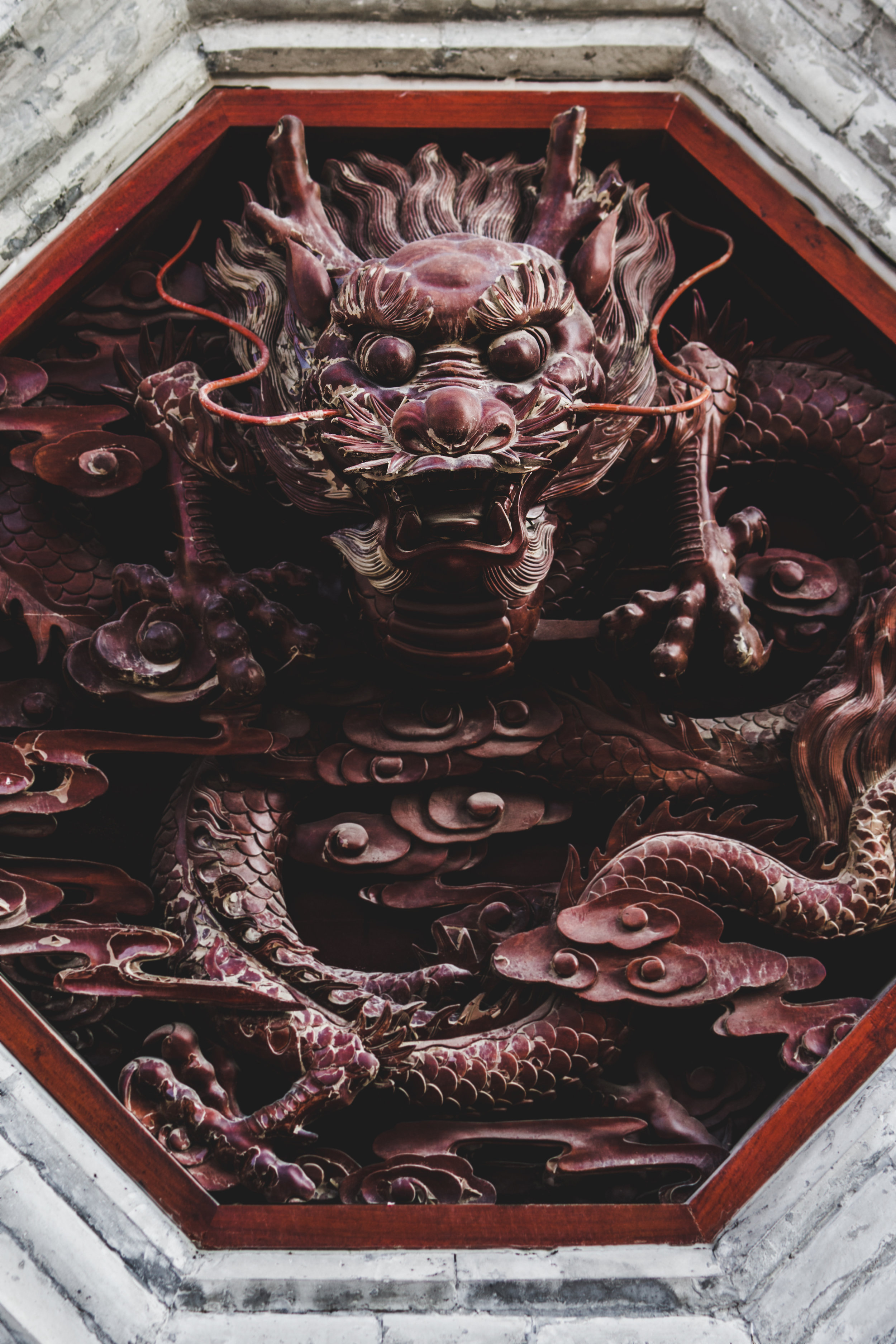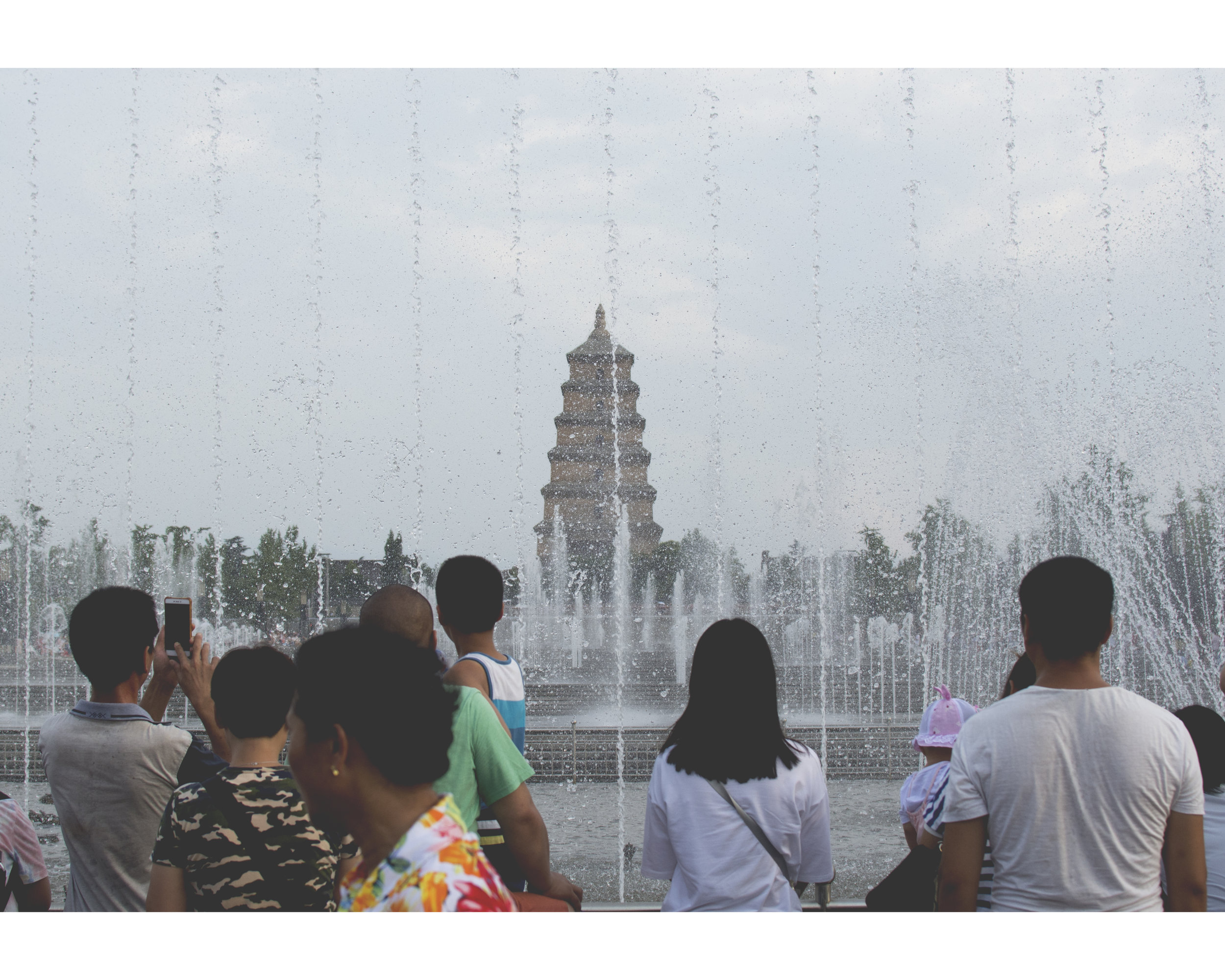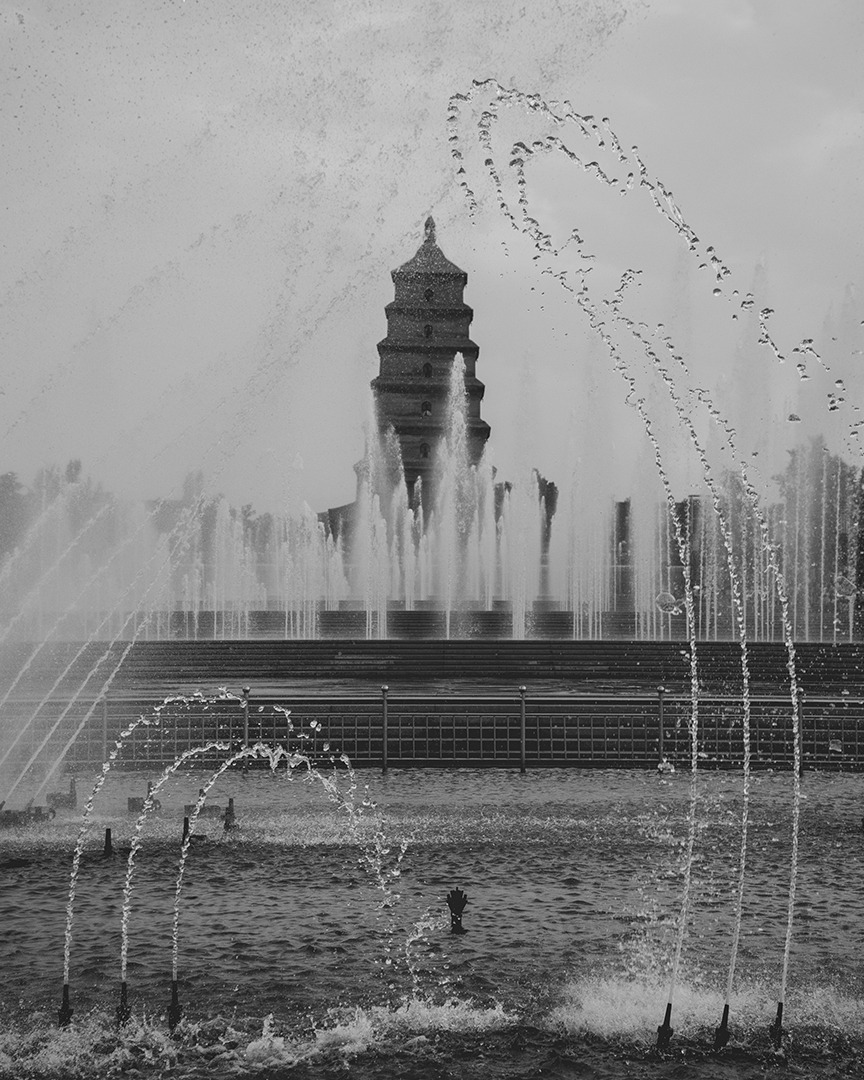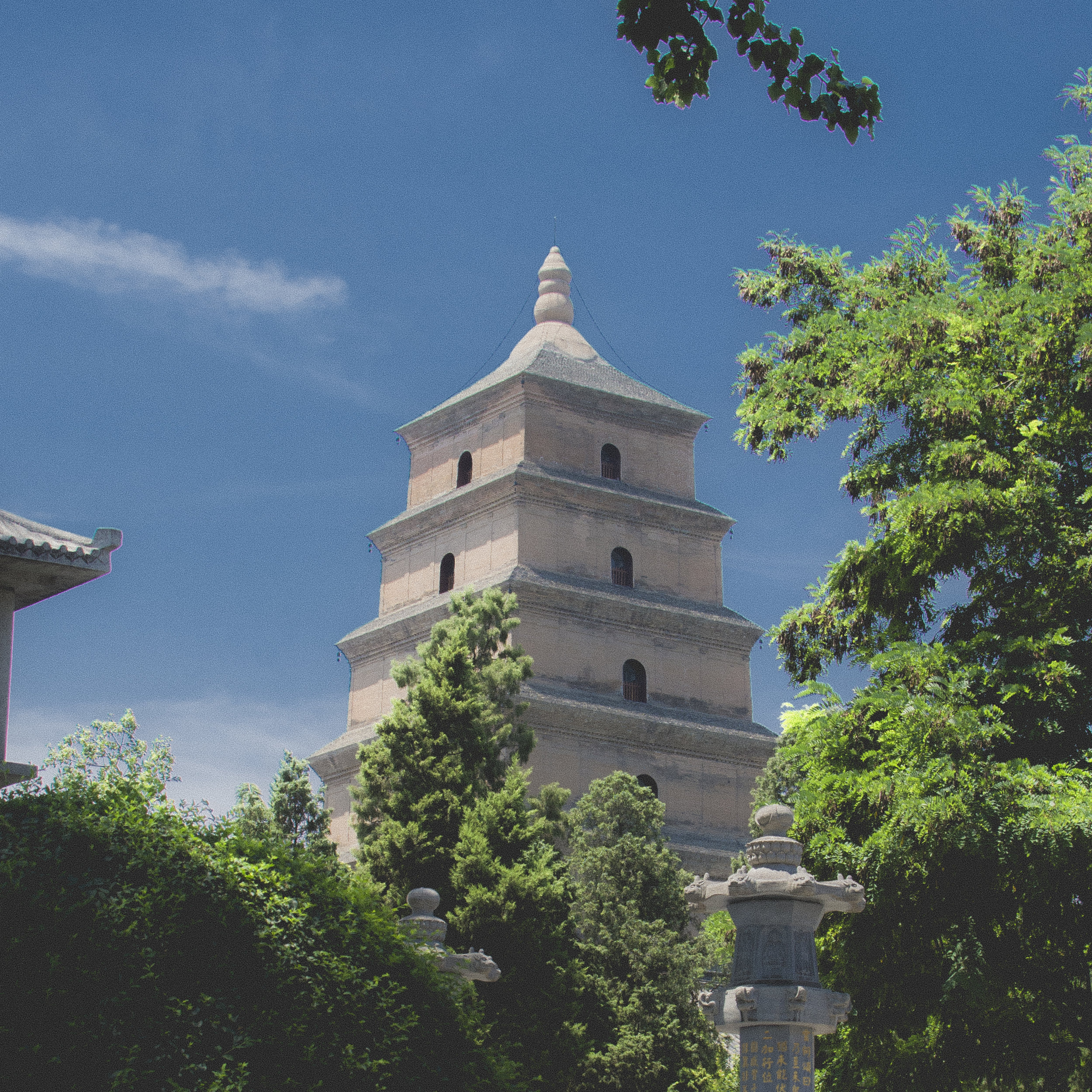Greetings, readers!
So, for my blog post, I decided to brace the hot and humid streets of Xi’an to do some sightseeing at the Giant Wild Goose Pagoda (not to be confused with its daughter structure, the Small Wild Goose Pagoda).
Currently, I am taking a short breather at a Burger King meant to resemble ancient temples of Xi’an, located in the north side of the park, as I have spent the better part of my morning walking in awe of the grounds surrounding the pagoda, as well as the ornate Buddhist temples within the inner walls (and of course the Pagoda itself!).
This is probably a good time to dish out some facts about this must-see, so here you are:
The Giant Wild Goose Pagoda is a staple attraction to Xi’an, due to its history as a center for translating the sacred sutra scrolls which are integral to the Buddhist religion. These texts, as well as many Buddhist relics, were carried along China’s famous Silk Road, and found their way to the Giant Wild Goose Pagoda during the Tang Dynasty (that makes the pagoda over 1,300 years old!).
The temple’s structure has a square foundation, which was a popular architectural style during the Tang Dynasty.
When it was originally constructed, the pagoda had only 5 floors; Currently, however, for a breathtaking view of the entire ancient city, one must ascend seven flights of steep, wooden, spiraling stairs. The climb is easily doable for all ages (even in this dreaded heat!), but visitors with certain conditions may need to take precaution before visiting.
As you climb the towering pagoda, you can learn about various relics and texts, located on each of its seven floors. For example, some of the Buddhist texts were written on ancient Pattra leaves, due to a lack of writing paper. According to my Google research, there are approximately 657 Pattra scrolls, which were stored in the basement of the pagoda. These scrolls are considered to be very rare because less than 10 people in the world can understand Sanskirt- the language of the scrolls.
One can also witness the Sarira, which is a relic considered to be a holy object, used for worshipping in Buddhist rituals.
Visitors must absolutely stay until mid-afternoon or evening for the famous (and FREE!) fountain show that occurs all-year round, just outside the inner walls. It is Asia’s largest water show, and is synchronized to a one-hour orchestral performance. It is a particularly spectacular show at night, due to the multicolored lights that accompany the show. It was really exciting to watch, and honestly my favorite part of the visit, besides the Giant Wild Goose Pagoda.
There is also much to see beyond the inner walls. One can stroll through both the East and West Gardens, and take photos of the sandstone statues scattered throughout. These statues depict various icons of China’s history, such as Qin Shubao and Yuchi Jingde, two generals of the Tang dynasty, who escorted Emperor Taizong for his entire lifetime. As well, one must walk to the South Square and witness the large statue of Monk Xuanzang of the Tang Dynasty. For my shoppers out there, across from the statue is the Great Tang All Day Mall.
As impressive as it is inside, it was really an adventure just to walk up the strip outside this building, as there are many historical and culturally significant installations, donated to the area. These statues ranged from life size depictions of various, prominent, Buddhist monks of the Tang Dynasty to whimsical, Alice in Wonderland-esque, features.
All in all, I would give this location a five star rating because of its well-maintained park, cultural significance, unique entertainment, and amenities.

